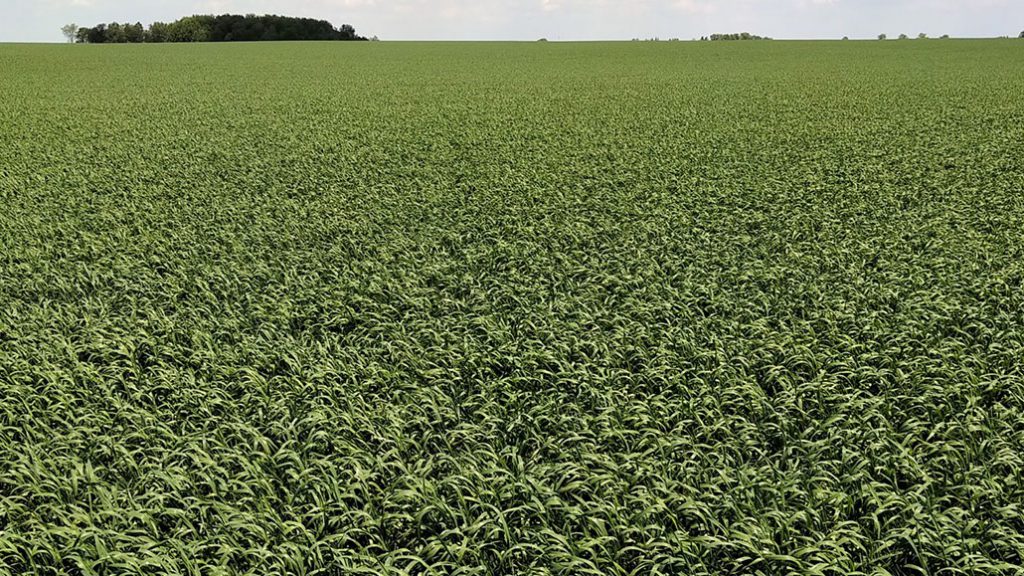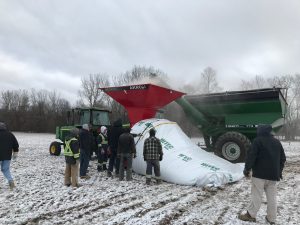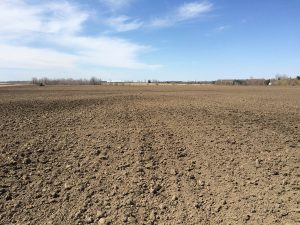Yield and quality in wheat
NITROGEN RATES

MANY WHEAT FARMERS across Ontario have increased their nitrogen rates in recent years with resulting increases in yield. Whatever nitrogen rate you went with last year, however, Peter Johnson, agronomist with Real Agriculture, cautions you — based on recent research results — to pay attention to your sulphur and take a systems approach to prevent lodging and achieve the best crop possible.
Grain Farmers of Ontario supported a sizable research project that examined nitrogen (N), sulphur (S) and fungicide applications in three classes of wheat in terms of disease, yield, and quality parameters such as protein content. Over three years, sites in southwestern and eastern and northern Ontario were planted with soft red winter, hard red winter, and hard red spring wheat and treated with five levels of N, with split treatments and control strips for comparison.
The research team measured disease, lodging, yield, moisture, maturity, thousand kernel weight, protein, Fusarium-damaged kernels (where appropriate), and at some sites, tiller and head counts. Soil type, previous crop, and residual soil nitrate concentrations were also measured.
POTENTIAL
Protein response to various N levels was extremely variable across the study locations, making it hard for the team to draw any conclusions. As expected, protein increased as N rate increased, says Johnson, and protein content increased a little in wheat treated with no fungicide compared to that which received an application. Overall, he says farmers can feel assured that their normal practices, particularly having N applications at or near maximized economic return, will continue to deliver a high-quality product for end users, and that management changes are not required for quality purposes.
In terms of the interaction of N and fungicides, a synergy was evident in this study.
“This indicates that even on fields with lower yield potential, management pays,” Johnson explains. “It is critical to note that while the economic impact is small between 90, 120, and 150 lbs of N/acre applications, at higher N rates the use of fungicide becomes more profitable. Based on average data in the study, there was a 4.6 bushels/acre yield increase from fungicide with 90 N. At 120, yield response increased to 5.2 bu/ac and at 150N, it increased further to 8.2 bu/ac. This shows the importance of using fungicide with increased N rates to utilize this synergy and gain increased value from both.”
However, Johnson cautions that this synergy may require farmers to apply more N as they continue to utilize fungicides. He advises those using fungicides in both winter and spring wheats to continue to test higher N rates to determine the optimum rate.
Johnson also cautions that those who are increasing their N rates in wheat and not adding more S could have crops with S deficiency.
“I think it’s become pretty obvious with hard red wheat that growers often need 180 N to get the yield and protein level required for end-use acceptance, and in fact some Ontario growers are applying as much as 200 N, but we need to balance that with increased S,” he explains. “We continue to get less and less S on our fields from atmospheric deposition, so some growers are applying as much as 20 to 30 lbs. We don’t have research results to support that amount but we do have results showing that more S must be added when N is increased.”
SYSTEMS APPROACH
Overall, Johnson stresses a systems approach to growing wheat. That is, the particulars of the individual field, its yield potential, its N and S dynamics, and so on, matter.
“There is a grower who went to 200 lbs N in Napanee and got a significant yield boost in 2020, and another in Chatham Kent who had no yield advantage using 180 compared to 120,” he says. “Wheat planted in September looked great last fall, with a high yield potential going into winter, but this potential will need to be supported with the right fertility this spring. Wheat planted in November will have less yield potential, so you don’t want to apply as much N to it as it will be wasted. The variety also matters. It’s a system.”
The new hard red varieties that show the biggest yield potential are Adrianus and Pro81, but Johnson stresses that with these and other newer wheats, farmers need to watch standability and manage the crop to reduce lodging.
“The old standby hard red variety Priesley often struggled to make protein but lodging was not an issue,” he says. “With new varieties, pay attention to your field, your practices, split N applications as needed, and/or use a plant growth regulator. It’s a system. I can’t emphasize that enough.”
This project was funded in part through Growing Forward 2, a federal-provincial-territorial initiative. The Agricultural Adaptation Council assists in the delivery of Growing Forward 2 in Ontario.
This article features research funded by Grain Farmers of Ontario. •



























